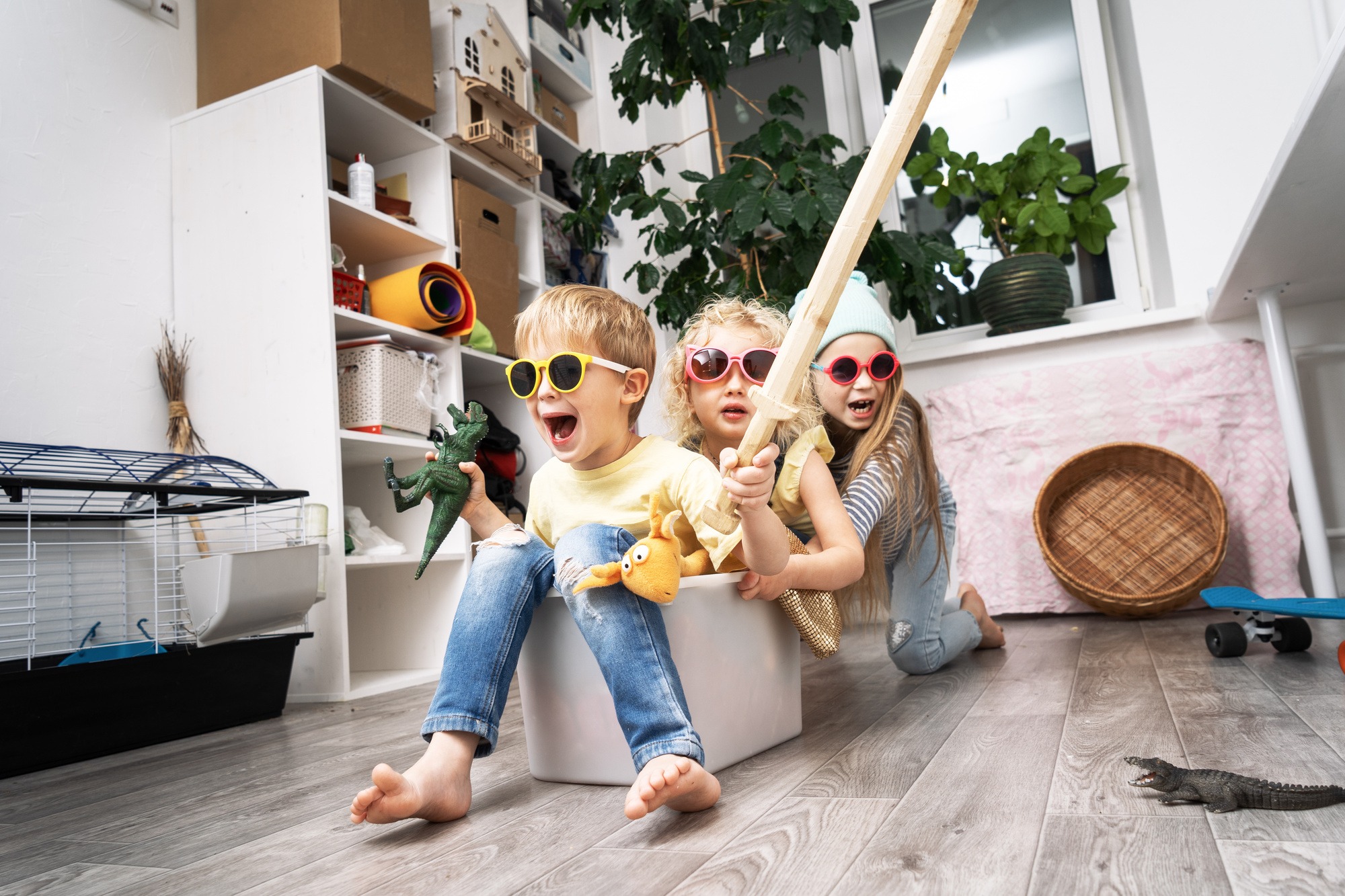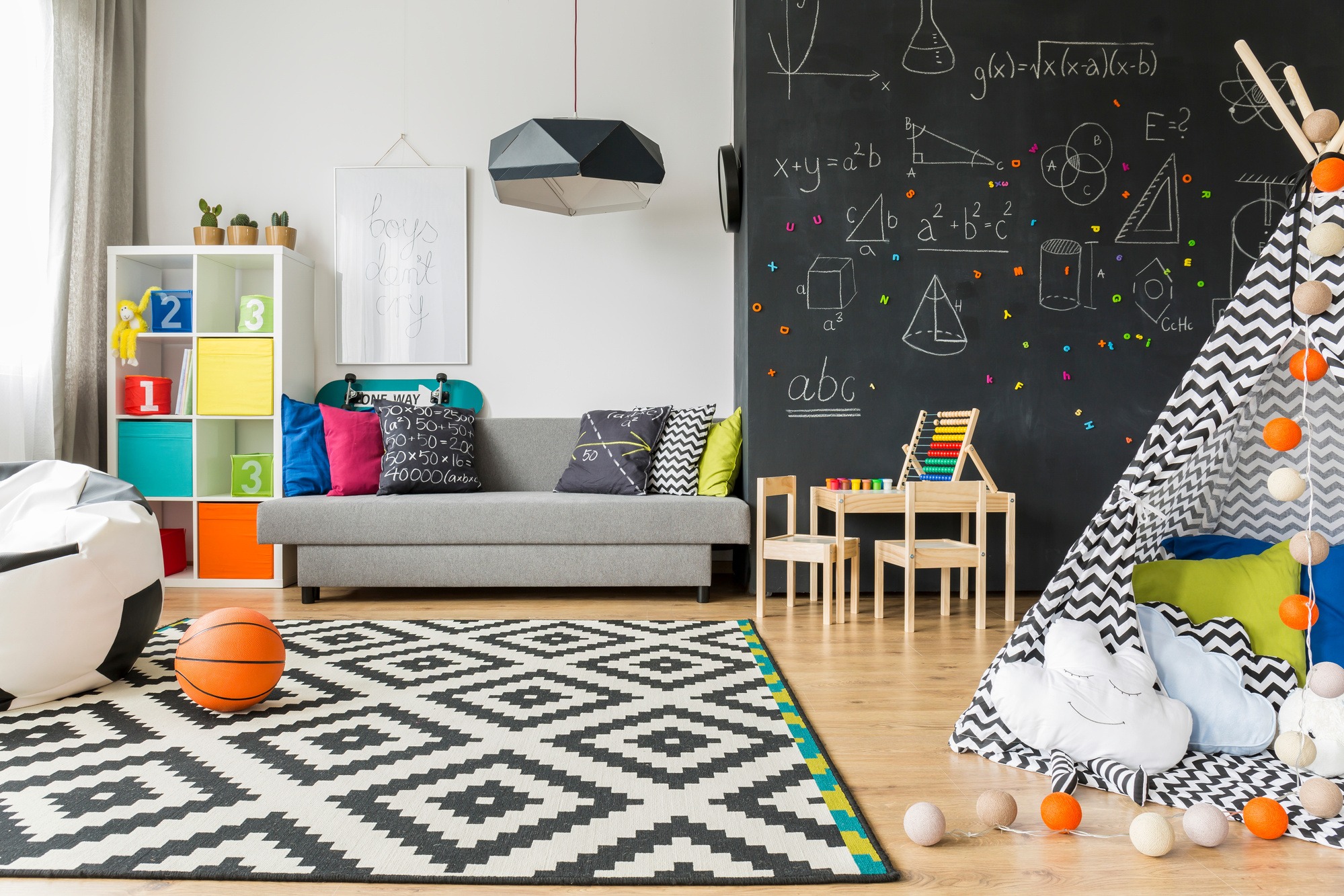When designing a home, it can be easy to be carried away and focus on your home’s aesthetics. But if you have children, there are other things you need to consider aside from interior design, such as your kids’ safety and how much space you need to accommodate their needs.
Whether you’re in the process of planning your dream home or looking to renovate your current place and make it a family-friendly haven, here’s a five-item guide to help you revamp your residence and create a kid-friendly home without sacrificing its stylish design:
1. Incorporate Safety In The Design
Children can be prone to injuries or accidents. Considering their age, they’re likely to be playful, looking to explore things that may be new to them, and move around a lot. With this in mind, it becomes more important to ensure your home is safe at all times and can accommodate your young ones.
Here are some design recommendations worth noting to help you babyproof your home.
- Make Sure Your Home Has Sufficient Lighting
One of the simplest things you can do to create a kid-friendly space is to ensure your home has sufficient lighting. The last thing you want is your child to get into an accident or hurt themselves due to poor lighting. You also want to ensure there are no dead spots or shadows where they might fall over.
You can do this by installing motion lights around the perimeter of your home. You may also install wall-mounted lights in critical areas that would be difficult to reach. This way, they’ll be able to see where they’re going, and you can also watch over them properly. But besides functionality, lighting can also spruce up your interiors, adding warmth and making them cozier.
- Install Baby Gates On Your Staircase
If you have stairs at home, installing baby gates is highly recommended. Doing this can help keep children safe by preventing the possibility of falling. These can also avert accidents and injuries and ensure your child has a safe space to play and explore.
You may ask your custom home builder for more information about installing baby gates. They may be able to help you design a gate that perfectly fits your staircase and matches your home’s interiors, so you don’t have to worry about installing it yourself.
- Cover Electrical Outlets
Electric outlets, while functional, can cause harm to your children. Regardless of how often you tell them not to go near or touch them, young kids may still be at risk of getting shocked or hurt. So, babyproof your home by getting outlet covers.
You can get individual outlet covers from hardware or home improvement stores. There are also sliding cover plates that can effectively protect your young ones from getting shocked or electrocuted while complementing your home’s interiors.
- Install Surveillance Cameras
Surveillance cameras are a great way to keep an eye on your kids, especially since you can’t be in the same room with them 24/7. You can get one with motion detection, so it won’t record anything when there’s no movement. Consider working with professionals when installing cameras so electric wires can be properly organized and won’t clutter your home.
Your role as a parent and homeowner is to ensure the safety and well-being of everyone, especially your children. That’s why it’s essential to ensure all the rooms in your home are free from hazards that could hurt or injure them.
2. Experiment And Be Playful With Colors
Introducing colors in a room is a powerful tool for making a space feel more spacious, open, and welcoming. It’s also an essential element to help you create a kid-friendly home, as it can help develop and promote a sense of comfort among young ones.
As a good start, you can refresh the wall paint colors of your home. For example, you can use pastel colors such as light blue, peach, or shades of gray for a more calming and relaxing living space. And for the kids’ room, you can be playful by introducing vibrant colors, such as yellow, green, orange, or blue. Such colors can make the room livelier and more fun, perfect for your curious and energetic little ones.
You can also add decorative accessories featuring these colors, like pillows, area rugs, playing mats, and curtains. You can also explore introducing playful patterns if you’re feeling more creative.
3. Make Enough Space For Children To Run Freely
As mentioned earlier, kids are natural explorers. As naturally curious beings, most youngsters are likely to enjoy running or jumping around the house. However, if your home’s indoor spaces are too tight or cluttered, they may bump into walls or furniture and hurt or injure themselves.
With that in mind, consider creating enough space for them to run or move freely without any obstacles. This is where good furniture layout and space planning come in. For one, it can be helpful to have an open floor plan for your living spaces. Doing so can allow flexibility and openness, encouraging your kids to move around and play freely without having to worry about their safety or bumping and breaking things.
Alternatively, if changing the layout of your home is not possible, consider choosing soft lines for your furniture. It means opting for round or curved shapes instead of those with sharp edges or corners. It’s also encouraged to secure and mount shelving units like bookshelves or cabinets against the wall to prevent your young kids from pulling on them, which can hurt them or cause accidents.
4. Plan A Children’s Playroom
Having a dedicated room where your young kids can stay and move freely can be a fantastic idea. Doing so can give them the freedom and flexibility to explore and play even while indoors. Giving them their own room can also be a good way to teach them about being responsible and the importance of organizing their toys and space.
To help you design your children’s playroom, start with a spacious room with good ventilation. This way, the room won’t get stuffy and promote natural light inside. You can have customized cubby holes or shelving to store kids’ toys, books, game boards, and arts and crafts items, to name a few. And to boost comfort and safety, you can install carpet or rubber mats.
In addition, a children’s playroom can also have kid-friendly furniture like bean bags and comfy chairs. You can also get entertainment set like a TV, speakers, and video game consoles. This way, the room can be a family room where parents and young kids can all hang out and spend time together and create lasting memories.
5. Add More Storage Solutions
You’d know storage is your best friend when you have kids at home. It is especially true since you’re likely to expect your home to get cluttered and messy with your kid’s toys, books, and other things. With that in mind, consider adding more storage spaces when designing your home.
Here are some storage solutions you can consider:
- Install custom shelving units: Instead of getting freestanding bookshelves, why not have custom shelves built and installed in your home? This way, you can personalize the design and material of your storage solutions while also maximizing the storage potential in your home. Professionals can work with irregular rooms or around windows. And to help keep your home organized and clutter-free, you can get baskets and plastic containers to store loose items.
- Go for closed storage: While open shelves can give you better access to things at home, they may not be as effective in concealing clutter. As such, closed storage solutions work best if you’re looking to keep things organized and out of sight. You can work with a custom builder to design and install drawers and closed cabinets in your living spaces. And depending on your home’s interior motif, you can get wooden cabinet doors for a more timeless and stylish accent.
- Get furniture with built-in storage: Another fantastic idea you can explore is furniture with built-in storage options. You can get modular seating furniture like sofas, poufs, and ottomans, to name a few. You can also have sideboards with shelves and coffee tables with racks for additional storage space to contain your kids’ toys, books, and other knick-knacks. Besides being functional, these pieces can add character to your spaces and be a good conversation starter in your home.
Wrapping It Up
Your home is your family’s sanctuary. As such, it should be a place that doesn’t only accommodate adults but also young children. This means designing and styling your home in a way that can ensure your kids’ safety as well as promote a cozy and stylish ambiance that every member can enjoy being at.
You can take inspiration from the ideas above to help you create a kid-friendly haven for your family. And so, prioritize safety in your home design, introduce vibrant colors, give your kids enough space to explore and move around the house, and add more storage solutions as a good start.


